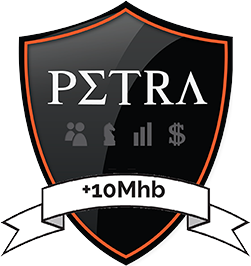I wrote about meetings in a previous blog entitled, “Meetings Suck.” I agree. Meetings do suck—if you do them incorrectly which most business owners and managers are guilty of. But, meetings are necessary to foster alignment.
My article below about “Daily Huddles” was originally published in the Tennessean August 23rd. Read it.
From 8:33 to about 8:48 every weekday morning you can find me and my team jammin’ out to AC/DC while we talk business. It’s our team huddle or our daily meeting, and it’s a vital ritual that’s structured to create company accountability and alignment.
“Come on Andy, I don’t have time for another meeting. Is it really that important?”
That’s the response most busy business owners give me as they cross their arms and raise an eyebrow when I tell them that routine daily huddles are essential to their company’s growth.
Yes, it’s that important. No one has time for another meeting. You have to make the time.
Think about it, would you put money on a football team that didn’t meet for a quick huddle? No, not unless you wanted to lose your money. So emulate your favorite sports team during your daily huddle. Gather your team, stand in a circle, talk fast, keep the energy high, play some “Eye of the Tiger,” and close with a cheer. Not only will this create team alignment, it will add some fun—something we could all use a little more of in the workplace.
The most efficient and effective huddle includes the entire team and follows a set dialogue.
Make it a team meeting: If you’re going to have a team meeting, make it an entire team meeting. Don’t create separate huddles for each department i.e. a huddle for sales and a huddle for IT. This deters alignment and communication, which is exactly opposite of what you’re wanting to achieve. Further, it reinforces the default barriers that already exist between departments.
Set discussion topics: This will speed up the process. Team members will know exactly what they’re expected to contribute to conversation and will be less likely to go off on tangents or digressions. Here are four topics I suggest:
- What’s Up? — This is where each team member quickly shares anything of relevance to the team — relevance being the key word. I met with Steve Smith yesterday. His company is relocating across town. This info is valuable to the entire group because Steve’s location will be different, Steve’s number and address will change, Steve’s logistical needs may be altered, etc.
- Key Performance Indicator (KPI) Updates — Have team members report their progress towards individual and company quarterly goals. If a team member sets a quarterly goal of meeting 25 potential clients and has currently met 15, he or she would bring this update to the huddle. This creates an environment of accountability because standing in front of teammates and reporting incomplete goals is never fun for anyone.
- Stuck or Needs — This is when team members can bring up a project or task they can’t move forward on without someone else’s collaboration or assistance. They must tell the other team member directly and specifically, in front of the entire group, what they need and by when.
- Top Priority — Team members announce one item on their to-do lists they WILL complete TODAY. It’s important to emphasize the use of “I will” versus “I’ll try” or “I’m supposed to.”
Now you know the recipe for daily huddle success, let’s conclude just like we’d conclude a huddle…
On the count of three say ‘I will implement a daily huddle!’
One-two-three… Break!
This article was originally published in The Tennessean.
Photo credit: <a href=”http://www.flickr.com/photos/joncandy/6133591974/”>joncandy</a> via <a href=”http://photopin.com”>photopin</a> <a href=”http://creativecommons.org/licenses/by-sa/2.0/”>cc</a>





